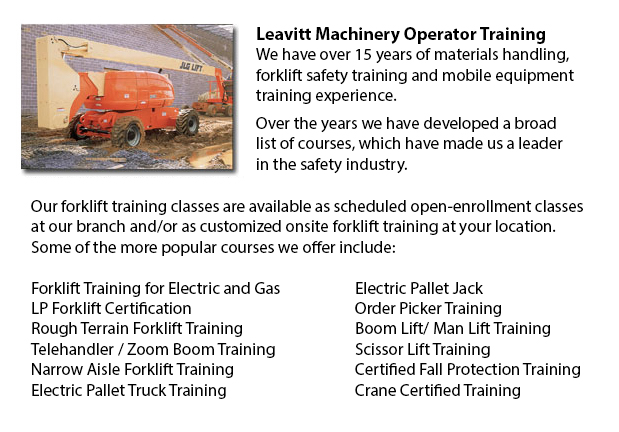
Aerial Boom Lift Training Glendale - Aerial Boom Lift Training is needed for any person who supervises, operates or works in the vicinity of boom lifts. This particular type of aerial lift or aerial work platform is used for lifting individuals, tools and materials in projects requiring a long reach. They are normally utilized to access other above ground job-sites and utility lines. There are different kinds of aerial booms lifts, like for instance cherry pickers, articulating boom lifts and extension boom lifts. There are two categories of boom lift: "telescopic" and "knuckle".
Boom lift training is important and normally involves the fundamental safety, operations and equipment concerns. Employees are needed whilst working with mobile equipment to understand the dangers, safe work practices and rules. Training course materials provide an introduction to the terminology, applications, skills and concepts necessary for employees to obtain competence in boom lift operation. The material is aimed at workers, machine operators and safety professionals.
This training is cost-effective, educational and adaptive for your business. An effective and safe workplace can help a company achieve overall high levels of production. Fewer workplace accidents occur in workplaces with stringent safety rules. All equipment operators should be trained and assessed. They require knowledge of existing safety standards. They must understand and follow guidelines set forth by the local governing authorities and their employer.
It is the employer's responsibility to ensure that employees who must make use of boom lifts are trained in their safe use. Each different kind of workplace machinery requires its own equipment operator certification. Certifications are offered for articulating booms, aerial work platforms, scissor lifts, industrial forklift trucks, and so on. Fully trained workers work more efficiently and effectively than untrained workers, who require more supervision. Proper training and instruction saves resources in the long run.
The best prevention for workplace fatalities is correct training. Training could help prevent falls, electrocutions and collapses or tip overs. Other than getting the needed training, workplace accidents can be better avoided by utilizing the aerial work platforms based on the instructions of the manufacturer. Allow for the combined weight of the tools, materials and the worker when following load restrictions. Never override mechanical, electrical or hydraulic safety devices. Employees should be held securely in the basket making use of a body harness or restraining belt with an attached lanyard. Do not move lift equipment while workers are on the elevated platform. Employees must be careful not to position themselves between the beams or joists and basket rails in order to avoid being crushed. Energized overhead power lines should be at least 10 feet away from the lift equipment. It is suggested that employees always assume wires and power lines might be energized, even if they appear to be insulated or are down. If working on an incline, set brakes and use wheel chocks.
-
Aerial Lift Train the Trainer Glendale
Aerial Lift Train the Trainer Glendale - The Aerial Lifts Train the Trainer Certification Program will teach trainers how to effectively train operators in safe industrial mobile machine operation. Trainers are given in-depth instruction on aerial li... More -
Forklift License Glendale
Forklift License Glendale - In North America, acquiring a forklift license or forklift certification involves hands-on and classroom training. Regulatory control over certification, training and license for powered industrial truck operators falls un... More -
Telehandler Certification Glendale
Telehandler Certification Glendale - Telehandler certification programs are both for operators who have some experience driving a typical forklift and for individuals with no experience. The real-world training provided by these courses produces grad... More -
Operator Safety Training and Re-Qualification Training and In-House Instructor Training in Glendale
Forklifts are used in almost all warehouse operations and in boat yards and in industrial construction sites. The reach feature of a forklift is a very important component utilized in a variety of applications like for example when a shelving system... More -
Manlift Training Glendale
Manlift Training Glendale - Different manlift training programs include the content and review of manlift devices. An important portion of the program is the practicum where students show their practical ability and knowledge to safely operate a manl... More -
Crane Certification Glendale
Crane Certification Glendale - The Crane Certification Program consists of the industry suggested subject matter which will teach the safe and efficient operation of cranes. The individual would train in the following: how to identify cranes and thei... More -
Loader Ticket Glendale
Loader Ticket Glendale - Gehl articulated loaders have been made to suit practically every condition. They offer optimal maneuverability and great traction due to a heavy-duty oscillating joint that provides 45-degree rotating angles right and left,... More -
Crane Ticket Glendale
Crane Ticket Glendale - The new version of a crane could be either simple or complex, and cranes vary based on their use. Mobile cranes, for instance are rather simple. A telescopic boom or steel truss mounts its movable platform. A system of levers... More

Forklift Training Glendale
TOLL FREE: 1-888-254-6157
Glendale, Arizona
forkliftcertificationglendale.com
Email Us
About Us


